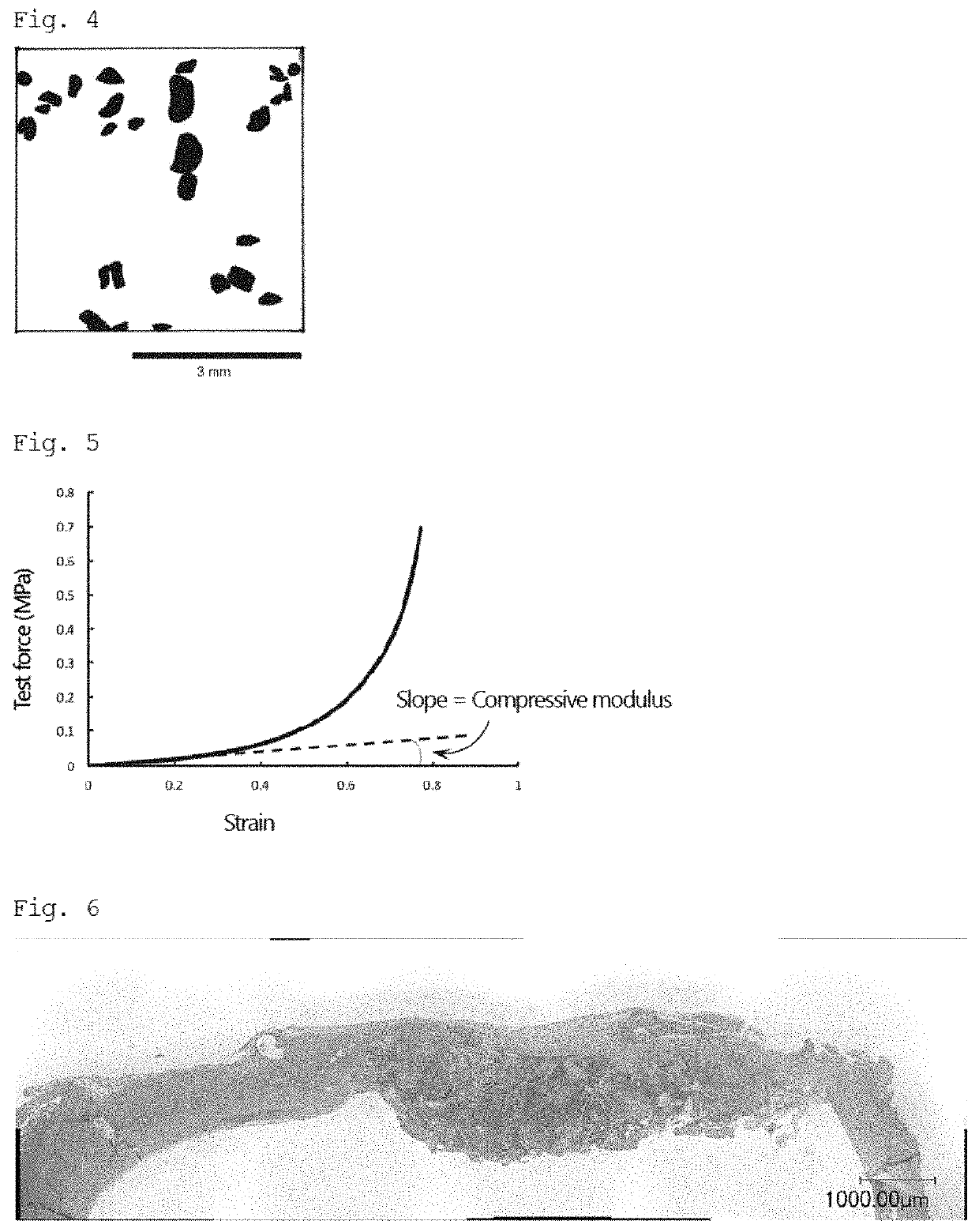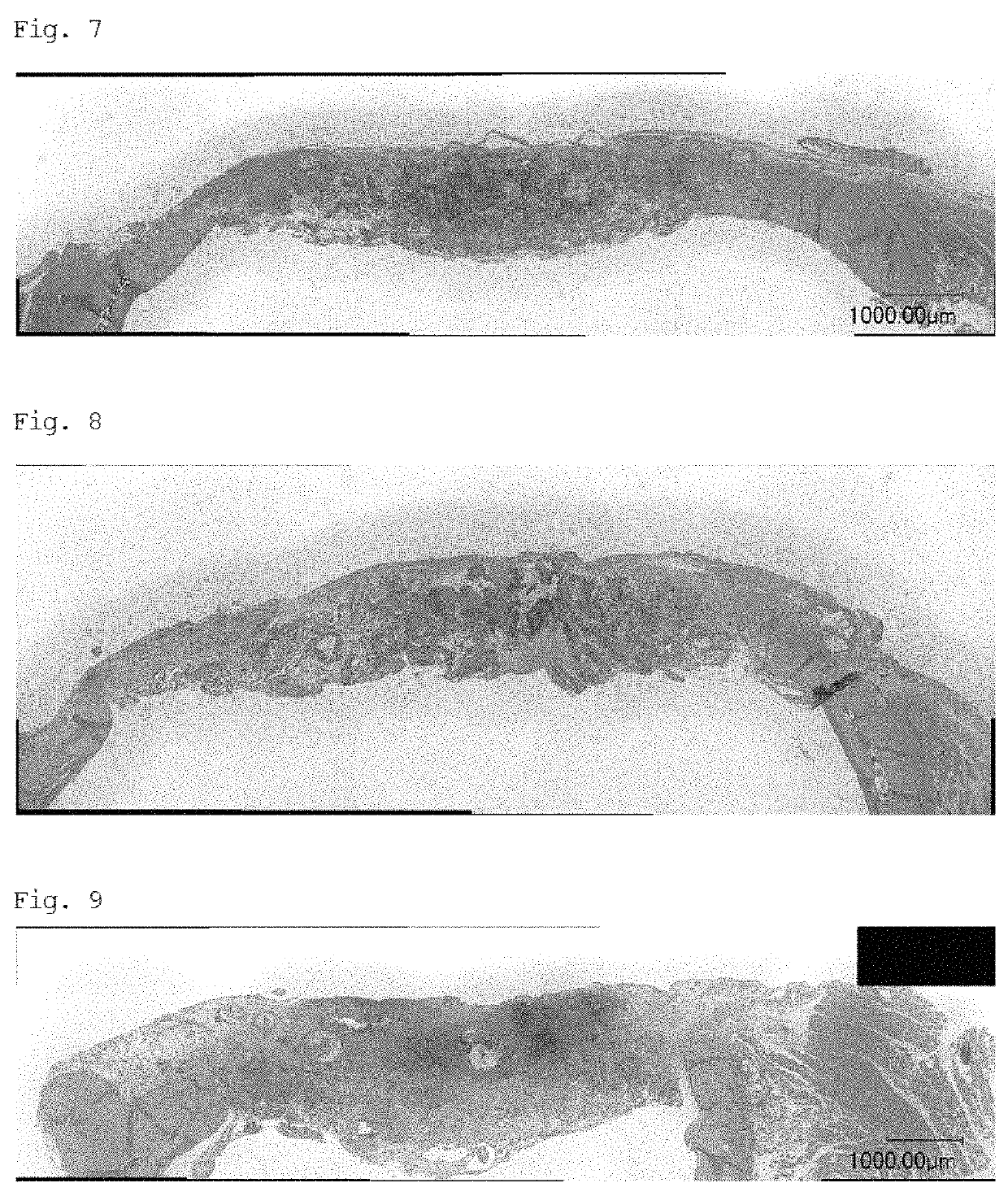Porous composite and bone regeneration material
a composite and bone technology, applied in the field of porous composites and bone regeneration materials, can solve the problems of poor shape-imparting properties of ocp, inorganic substances, and the difficulty of ocp alone so as to regenerate an extensive bone defect region, for example, to achieve the effect of preventing fluctuations in osteoconduction, promoting bone regeneration, and large particle siz
- Summary
- Abstract
- Description
- Claims
- Application Information
AI Technical Summary
Benefits of technology
Problems solved by technology
Method used
Image
Examples
example 1
(1) Preparation of OCP
[0079]First, liquid 1 and liquid 2 for preparation of OCP were prepared in the following manner.
Liquid 1: Sodium dihydrogen phosphate dihydrate (31.2 g) was dissolved in 2500 g of distilled water to prepare liquid 1.
Liquid 2: Calcium acetate monohydrate (35.2 g) was dissolved in 2500 g of distilled water to prepare liquid 2.
[0080]Subsequently, liquid 1 was placed in a separable flask, and heated to 70° C. using a mantle heater. Next, while liquid 1 was stirred at a rate of 250 rpm using a stirrer (MAZELA Z, produced by Tokyo Rikakikai Co., Ltd.) equipped with stirring blades (blade diameter: 12 cm), liquid 2 was added dropwise to liquid 1 at a rate of about 28 mL / min. After completion of the dropwise addition, the mixture of liquid 1 and liquid 2 was further stirred at 70° C. at 250 rpm for 2 hours.
[0081]Subsequently, the precipitate produced in the above mixture was filtered through a membrane filter (pore size: 3 μm; A300A293C, produced by Advantec Toyo Kaish...
example 2
[0086]A porous composite was obtained in Example 2 in the same manner as in Example 1 except that a collagen gel and OCP were mixed at a rotational speed of 300 rpm for 300 seconds using a stirrer with blades.
example 3
[0087]A porous composite was obtained in Example 3 in the same manner as in Example 1 except that a collagen gel and OCP were mixed at a rotational speed of 1000 rpm for 60 seconds using a rotating / revolving mixer (Awatori Rentaro ARE-310, produced by Thinky Corporation).
PUM
| Property | Measurement | Unit |
|---|---|---|
| size | aaaaa | aaaaa |
| size | aaaaa | aaaaa |
| compressive modulus | aaaaa | aaaaa |
Abstract
Description
Claims
Application Information
 Login to View More
Login to View More - R&D
- Intellectual Property
- Life Sciences
- Materials
- Tech Scout
- Unparalleled Data Quality
- Higher Quality Content
- 60% Fewer Hallucinations
Browse by: Latest US Patents, China's latest patents, Technical Efficacy Thesaurus, Application Domain, Technology Topic, Popular Technical Reports.
© 2025 PatSnap. All rights reserved.Legal|Privacy policy|Modern Slavery Act Transparency Statement|Sitemap|About US| Contact US: help@patsnap.com



